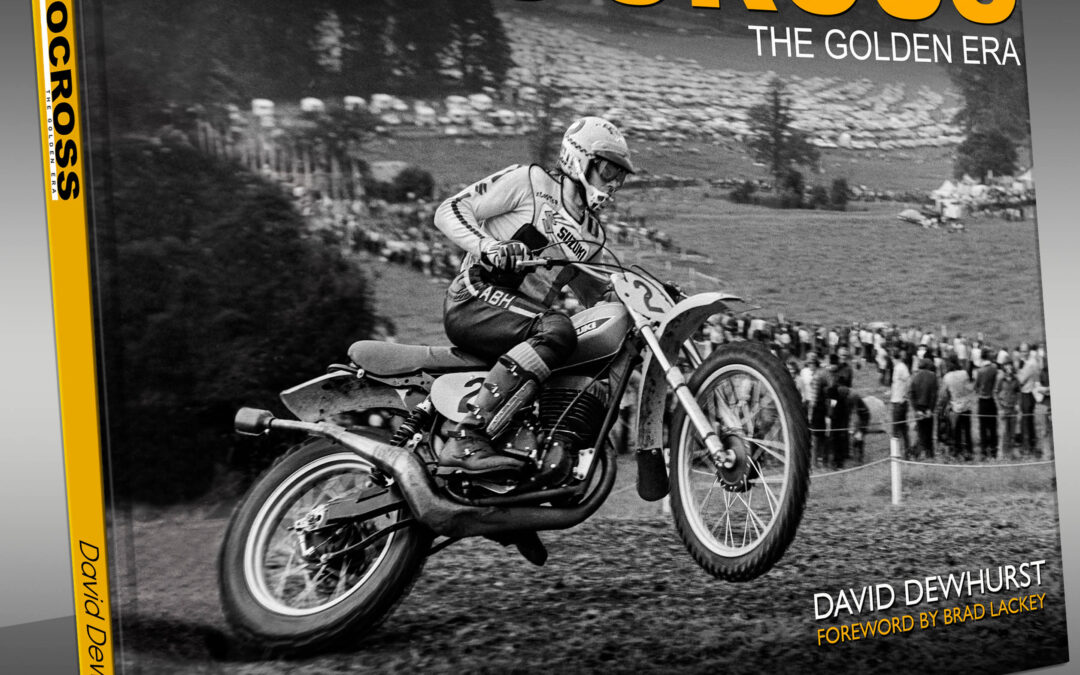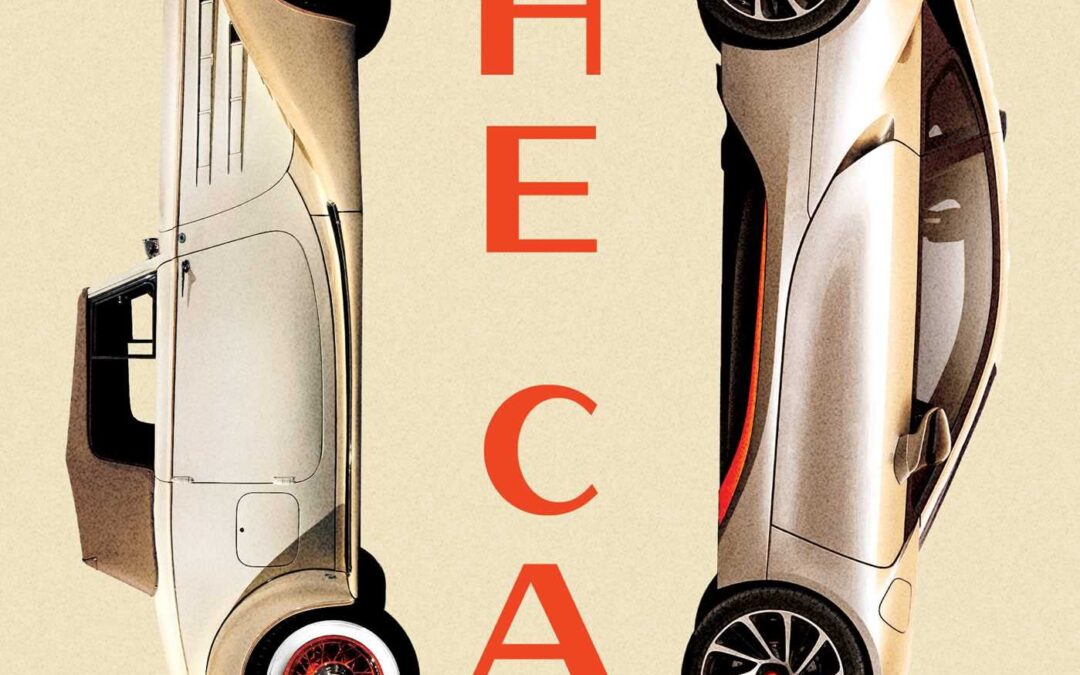
A spirited, insightful exploration of our favorite machine and it’s cultural impact on society over the past one hundred and fifty years.
More than any other technology, cars have transformed American popular culture. Cars have created vast wealth as well as novel dreams of freedom and mobility. They have transformed our sense of distance and made the world infinitely more available to our eyes and our imaginations. They have inspired cinema, music and literature; they have, by their need for roads, bridges, filling stations, huge factories and global supply chains, re-engineered the world. Almost everything we now need, want, imagine or aspire to assumes the existence of cars in all their limitless power and their complex systems of meanings.
This book celebrates the immense drama and beauty of the car, of the genius embodied in the Ford Model T, of the glory of the brilliant-red Mercedes Benz S-Class made by workers for Nelson Mandela on his release from prison, of Kanye West’s ‘chopped’ Maybach, of the salvation of the Volkswagen Beetle by Major Ivan Hirst, of Elvis Presley’s 100 Cadillacs, of the Rolls-Royce Silver Ghost and the BMC Mini and even of that harbinger of the end—the Tesla Model S and its creator Elon Musk.
As the age of the car as we know it comes to an end, Bryan Appleyard’s brilliantly insightful book tells the story of the rise and fall of the incredible machine that made the modern world what it is today.
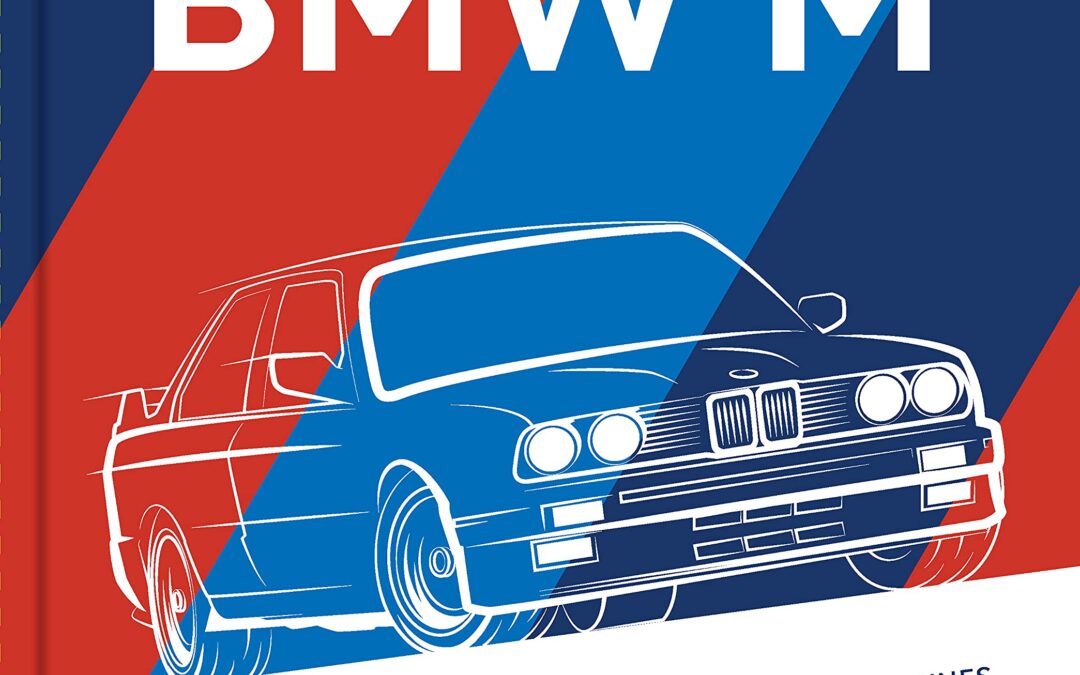
BMW M-Series celebrates the 50th anniversary of these legendary German performance cars, detailing both its production and motorsport stories with expert commentary and fascinating photography.
BMW launched the Motorsport, or “M”, division in 1972 to formally support its growing and successful racing program. Wisely, BMW leveraged that racing credibility to create limited-edition, high-performance production cars, the first being the M1 supercar of 1978. Tested and tuned at a dedicated facility located at the legendary Nürburgring, BMW’s M cars are true “driver’s cars” focused first and foremost on handling and performance. Still, they are docile enough when not driven aggressively to serve as comfortable high-end daily drivers.
Since the late 1980s, the range of M models has broadened considerably and now includes coupes, convertibles, and sedans in M2, M3, M4, M5, and M8 flavors along with high-performance X-series M SUVs. Early M cars like the M1 and late 1980s M3 and M6 are now desirable collector cars welcomed at top collector auctions and commanding premium prices.
With decades of racing and production success and, literally, no signs of slowing down, BMW’s M cars hurtle full speed to their 50th anniversary in 2022. BMW M offers the history no Bimmer fan will want to be without.

The Audi R8 was the first in a line of world-beating sports-prototype cars from the Ingolstadt marque which would dominate Le Mans, and would see Audi remain at the forefront of international sports-car racing for over 15 years.
If such an award could go to a machine, Audi ‘R8-405’ – the car featuring in this book – was surely the ‘Man of the Match’ for the 2000 Le Mans 24 Hours. In the end it would finish second, behind one of its team mates which had a far less-troubled run, but it was not for want of trying by Allan McNish, his co-drivers Stéphane Ortelli and Laurent Aïello and their mechanics.
The Audi R8s would go on to dominate endurance racing for a further five years. The cars had already shown what they were capable of by finishing first and second on their debut, in the 12 Hours of Sebring in March 2000.
At Le Mans, apart from a brief aberration when a Panoz led under a full course yellow, ‘R8-405’ led the race for six hours. Trouble then intervened, but the car’s drivers never gave up, McNish setting fastest lap of the race in the morning still chasing his team mates Frank Biela, Tom Kristensen and Emanuele Pirro in the eventual winning sister car. That car would soon be on its way to Audi’s museum, but ‘R8-405’ would race on in the American Le Mans Series (ALMS), driven later that year by Biela and Pirro and winning at Texas Motor Speedway and Las Vegas.
By the end of the season, ‘405’ and the other 4-series 2000-season R8s would be rendered almost obsolete by Audi’s introduction of a direct-injection engine for its new 5-series R8. That did not stop ‘405’ from competing for a further year in the ALMS, albeit in private – Champion Racing – hands, with regular drivers including Andy Wallace and Johnny Herbert. Despite its tender years, it would later go on to qualify as an historic car, and a host of new opportunities opened up as it became one of the most raced of all the R8s.
In 2020 the car was acquired by enthusiast Martin Halusa with every intention of taking it back to Le Mans in the future for the biannual Classic races.
The enthralling story of ‘R8-405’ is told in fascinating detail in this book, supported by a stunning array of photographs showing the car in action in its two years of ‘period’ competition, together with a gallery of fine studio images showing this ‘Great Car’ as it is today.
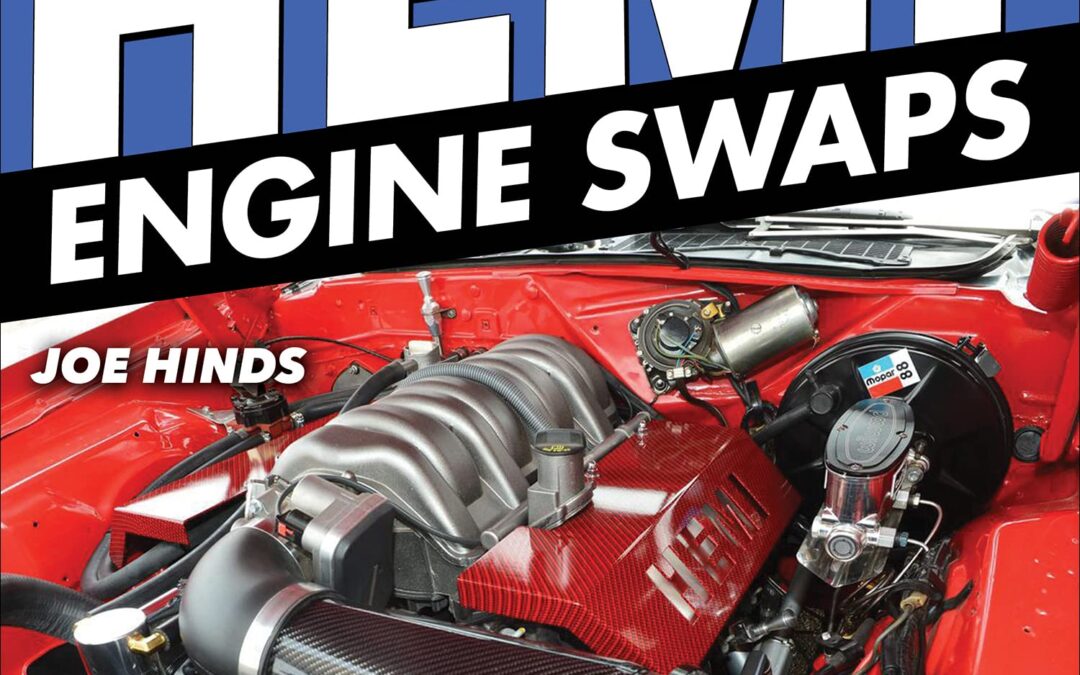
Have you made plans for a new Hemi swap into your classic car? Maybe you’re just curious about the process and want to know how much work is involved. Either way, New Hemi Engine Swaps: How to Swap 5.7L, 6.1L, 6.4L, and Hellcat Engines into Almost Anything has you covered!
Even casual enthusiasts are aware of how many people are swapping modern technology into vintage chassis. Successful LS swaps have been common for more than a decade. They seem to be everywhere among GM enthusiasts.
On the Mopar side, the new Hemi platform is now 20 years old, so plenty of salvage-yard cores are available. With the introduction of the new Hellcat in 2015 (as well as a more robust crate-engine program in recent years directly from Mopar), aftermarket manufacturers have recently seen the wisdom of making peripherals and parts to simplify the process of this swap. Suddenly, swapping a crate Hemi seems as achievable as an LS swap.
In New Hemi Engine Swaps: How to Swap 5.7L, 6.1L, 6.4L, and Hellcat Engines into Almost Anything, expert Joseph Hinds guides you through the process of turning your vintage ride into a modern street machine. The essentials are covered, including engine mounts, transmission cross members, headers that actually fit, and solutions for other common issues. Also covered are fuel-supply items (pumps and tanks) and engine-compatibility concerns (oil filter locations and oil-pan accommodations). Finally, the biggest concerns for most are the wiring, modern power train control modules (PCMs), computer controls, and fuel injection, all of which are covered here as well. There are even step-by-step instructions to fit a modern Hemi into an early-1970s-era Duster as well as a feature about programming aftermarket electronic fuel-injection (EFI) systems.
Now that the degree of difficulty in performing these swaps no longer requires a degree in computer science with welding certifications on the side, many are looking at their vintage Mopars in a new light. Whether you want to do this yourself, farm it out to a professional, or if you are just curious about how it is done, this is the guide for you.
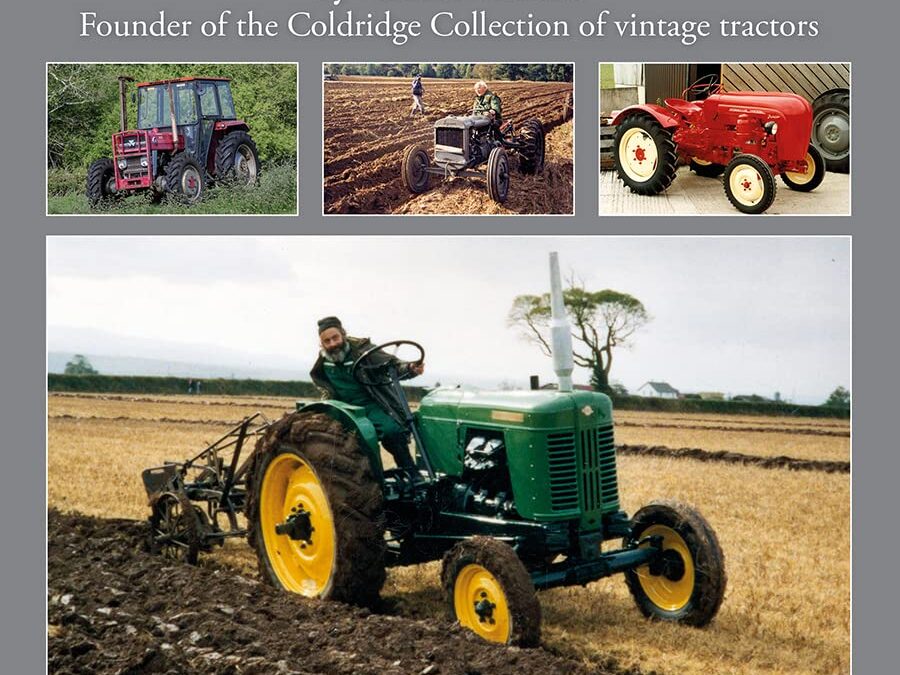
Mike Thorne is a name known to many, many tractor enthusiasts, and particularly those whose primary interest is in Ferguson and Massey Ferguson models, as Mike has assembled an almost unrivaled collection of the tractors of both marques. But before he decided to go down that route, he had been collecting tractors since the 1980s – machines of many makes, models and vintages, some in good order, others wanting substantial work. In his time he has acquired no less than 100 examples, and in this book he takes the reader through them all, with individual entries on every one – though he admits there are some that he has forgotten. So the reader will be treated to observations on a very wide range of tractors, large or small, rare or common, good or less good, with information on where he bought them, on problems, repair and restoration, and on the machines’ characteristics and specifications. Mike designed and constructed two fascinating buildings to house his collection at Coldridge in deepest mid-Devon and these form his museum, which can be visited by appointment and offers enthusiasts a real treat. Telling one man’s story of half a lifetime of rescuing half-dead tractors and collecting live ones, this book, written in an informal style, should capture the attention of anyone who cares about vintage tractors.
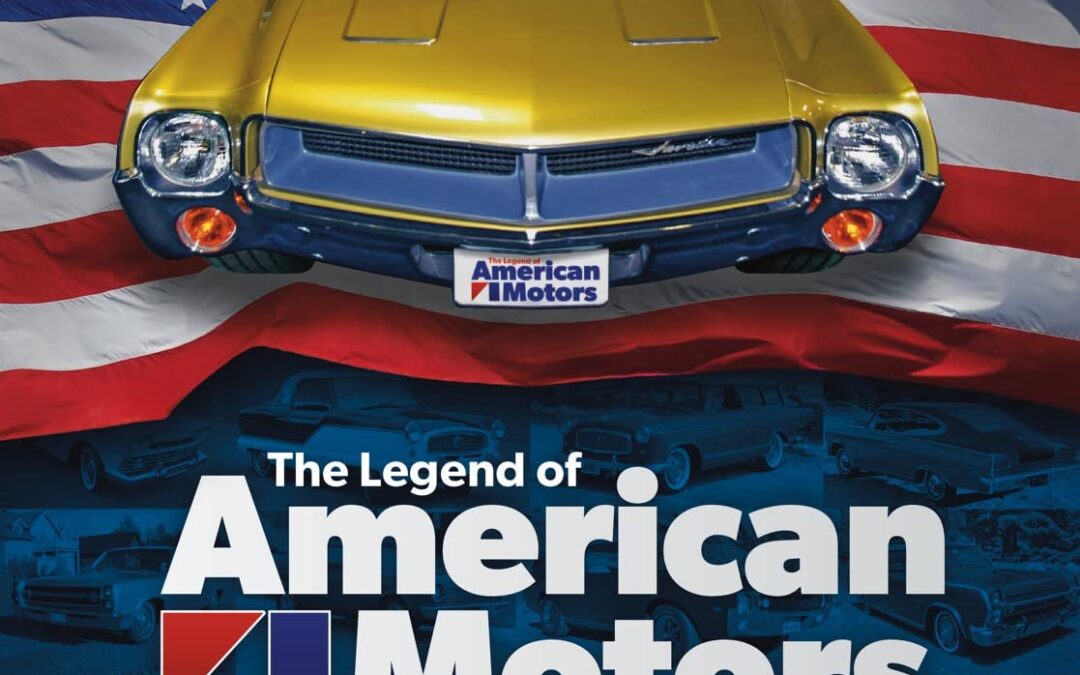
American Motors was the little automotive company that made a big impact. Makers of the Rambler family car, Kenosha offered an antidote to the excess of Detroit’s Big 3. But when America decided it wanted sporty, rather than econocars, AMC got groovy with the Javelin, AMX, Scrambler and Rebel Machine. American Motors was a proven performer in showrooms and on the track, with success in drag and road course racing. However, through it all came solid Rambler value, and a different approach from Detroit: An accent on consumer protection, along with brand label special editions. And when it came to blue sky thinking, AMC surpassed all with their Gremlin and Pacer small cars. Off road, Kenosha truly made Jeep ‘The One & Only,’ popularizing the brand and making it the sales success it is today. Beyond that, AMC created America’s first crossover, the Eagle. It all proved that America’s smallest … was its biggest surprise!

Celebrate more than 100 years of Germany’s best two- and four-wheeled rides. This handsome volume is filled with images, history, and in-depth review of the incredible machines BMW has created year after year.
Established in 1916, BMW is one of the automotive and motorcycle industry’s oldest and most-respected manufacturers. Over the past 100-plus years, the company has passed through myriad incarnations. The BMW Century chronicles this remarkable transportation story through the cars and motorcycles manufactured, from the 1923 R32 motorcycle to today’s sleek electric, hybrid, and high-performance cars.
The BMW Century showcases how the company’s visionary team systematically rebuilt BMW in the post-World War II years into the spectacular success we know today—a company with sales in excess of two million cars annually, led by its top-selling 3-series.
BMW’s motorcycle division is no less legendary. It began with the 1923 avant-garde R32, which featured a 180-degree, horizontally opposed twin, the engine configuration that would become BMW’s hallmark. Over the decades, BMW used that configuration to power groundbreaking machines like the R90S, R100RS, and R80GS. Beginning in 1983, the company added add three- and four-cylinder machines to their offerings, culminating in today’s spectacular S1000RR sport bike.
From the pre-war motorcycles to the iconic R-series twins of the 1970s and ’80s to the mighty M-cars and superbikes of today, The BMW Century offers a full review of German engineering at its zenith. The book is illustrated generously with hundreds of historic, contemporary, and racing photographs—many sourced from BMW’s historic archives—and thorough text covering BMW’s full history.
This is the one volume no BMW aficionado will want to be without.

It’s not a truck or a car—it’s a Jeep!
Developed in the early 1940s as a light reconnaissance vehicle for the U.S. Army, the Jeep successfully transitioned from military usage to public use with the arrival of the CJ-2A in 1945. Many more CJ models followed, which cemented the Jeep as one of the most successful and longest-tenured models when the CJ-10A was discontinued in 1986.
With more than 1.5 million Jeeps sold, a restoration book for these vehicles has been desperately needed. Author Mark Altschuler of restoremyjeep.com showcases his decades of experience in this must-have restoration book that features component restoration of all aspects of the timeless Jeep. Step-by-step procedures document the disassembly, restoration, and reassembly of your favorite models, while color illustrations depict exactly what you’re wanting to see as you address your project.
How to Restore Your Jeep 1941–1986 is not only a handy tool that addresses the total restoration of your prized machine but it will likely also be one of the most affordable tools that you will purchase for your project.

The high-octane, Seabiscuit-meets-Scarface story of how Randy Lanier became a 1980s international sports star, soaring through the ranks of car racing while holding a dark secret: he was also one of the biggest pot smugglers in American history
As a kid, Randy Lanier dreamed of achieving four-wheel glory at the Indianapolis 500, but knew he’d never be able to afford the most expensive sport on earth. That all changed when he bought a speedboat and began smuggling pot from the Bahamas. Fueled by what would become a historically massive smuggling operation, he started racing cars and became an overnight sensation. For Randy and his teammates, money was no object, and bigger hauls meant faster cars. At every event they attended, they were behind the wheel of the best machinery, flaunting their secret in front of huge crowds and live television cameras. But no matter how fast they drove, they couldn’t outrun the law. As Randy came ever closer to reaching his dream of high-speed glory, one of the biggest drug scandals ever to hit the professional sports world was about to unfold.
Set in the 1980s Florida of Miami Vice, this is the unbelievable, unforgettable, unparalleled story of an ordinary guy whose attempts to become famous doing the thing he wanted most—become a world class race car driver—devolved into a you-can’t-make-this-up tale of one of the biggest crime rings and drug scandals of the 1980s. Now, with the help of New York Times bestselling author A.J. Baime, Randy tells the whole truth for the first time ever, a gripping narrative unlike any other, a sports story for the ages, and shocking a true crime epic.

Detailed purchase advice for Germany’s premier classic sports car—the Porsche 911.
The Porsche 911 is one of the finest and most important sport cars ever made. These fantastic machines have become top-level collectibles, making it more important than ever to fully understand the car you are considering buying. Don’t let your dream car turn out to be your greatest regret. Arm yourself with the knowledge necessary to purchase with confidence.
Randy Leffingwell’s Classic Porsche 911 Buyer’s Guide 1965-1998 is the most comprehensive resource available to guide you past the potential pitfalls in your pursuit of Stuttgart’s classic sports car. This year-by-year guide will help you select the model and year that best aligns with your ownership goals. You’ll learn which features you want, which to avoid, and the known flaws from across all the air-cooled generations.
Detailed text for each model year is accompanied by:
- Technical specifications
- Typical parts costs
- Performance ratings
- An invaluable “Garage Watch” feature calling out common and known faults
Classic Porsche 911 Buyer’s Guide 1964-1998 is an invaluable resource in finding the perfect classic 911 for your garage!
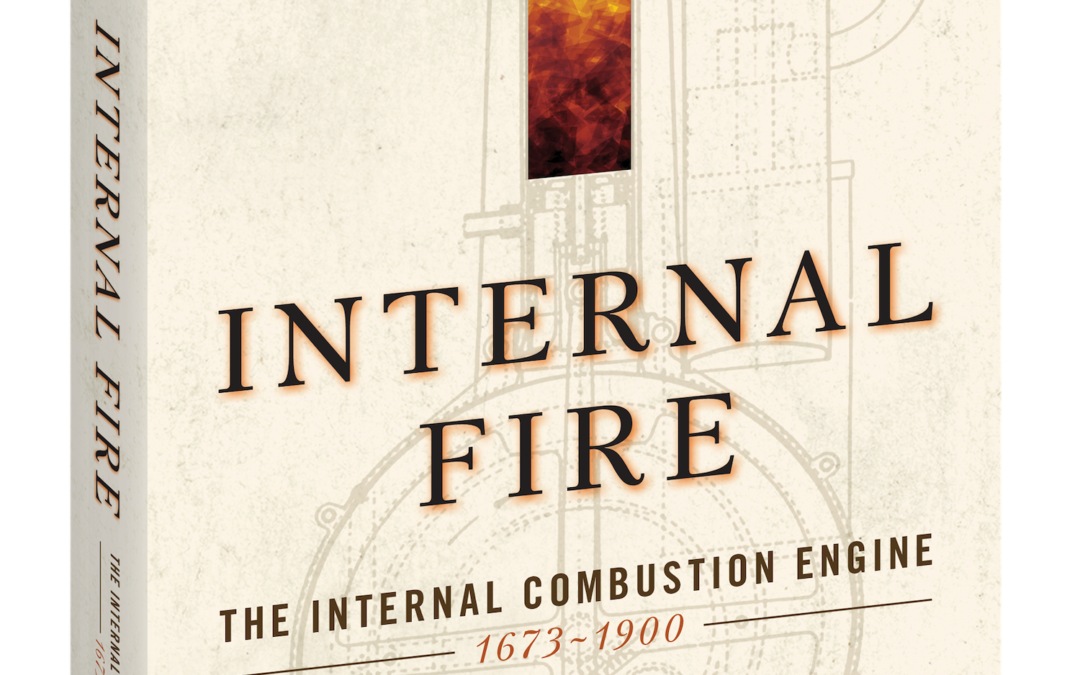
This book is a reprint of an important publication that was first published by the Society of Automotive Engineers in 1989. It is an authoritative and entertaining account of the evolution of the very early internal combustion engine. We at Octane Press believe it to be a critical piece of automotive history and are happy to have a revised edition to offer to our readers. If you want to understand how the engine in your favorite machine came to exist, this book and Diesel’s Engine, the companion book by the same author, are critical additions to your library!
Internal Fire is the captivating history of the internal combustion engine and the creative individuals who brought it to life. From gunpowder to diesel, the development of these early powerhouses has been recorded from all sides. The influences of new technologies, patents, and obtainable fuels, as well as a growing understanding of the very nature of heat itself are all explored.
Internal Fire is not intended as a textbook, but as the well-researched and readable chronicle of a mechanical servant that has greatly influenced life in the 20th century and beyond.
You will find in this comprehensive book:
■ Gunpowder and Steam
■ Air Engines
■ Thermodynamics: Carnot Charts a Course
■ Patents: Origin and Influence
■ Internal-Combustion Engines: 1791-1813
■ Searching and Perfecting: 1820-1860
■ The Genesis of an Industry
■ Otto and Langen
■ Otto’s Four-Stroke Cycle
■ Brayton and His “Ready Motor”
■ The Two-Stroke Cycle
■ Gas and Gasoline Engines to 1900
■ Oil Engines: An Interim Solution
■ Rudolf Diesel: The End of the Beginning
“This new and well-researched work by Lyle Cummins has at last provided a readable account of the work and people concerned in the search for a more efficient heat engine cycle.”
– The Newcomen Society Bulletin
“Thoroughly researched and eminently readable.”
– The Institute of Mechanical Engineers
“Fascinating tour through the early efforts to design a practical internal-combustion engine.”
– Road & Track

‘A special treat…The pictures and stories combine to provide a rich texture to telling the difficult story of why we chase speed like an addiction.’ Valerie Thompson, the world’s fastest female motorcycle racer
Ever since we built machines that could transport us, there has been a desire to find ways to make them go faster. For some, going faster isn’t enough – they want to be the fastest. This book celebrates those who have built the machines and driven them at ever greater speeds. This is The History of Speed.
Bestselling automotive writer Martin Roach tells the extraordinary story of those who have come to be obsessed by speed. From Camille Jenatzy, ‘the Red Devil’, who became the first man to drive at over 100kmh in 1899, through the golden age of Malcolm Campbell and his Bluebird, and on to the modern era of jet- and rocket-propelled cars, we have gone faster and faster. But this book is not just about these record-breakers, Roach also looks at the technology, the engines and the inventors who helped progress in speed at all levels, from Formula One to the supercars from the likes of Ferrari and Mercedes that are eagerly snapped up by collectors, rarely to be seen on the road.
Accompanied by some of the most stunning images of the cars and those who made and drove them, Roach tells a wonderful story of innovation and invention. He talks to some of the great drivers to find out what inspires them to risk their lives, and finds out from engineers how they developed their ideas. Along the way, we hear some remarkable tales and anecdotes, but also find out how the pursuit of speed can also have its costs, with many tragic heroes and heroines falling along the way.
If you’ve ever thrilled to the roar of a sports car engine, or loved the feel of the g-force as you accelerate away, or even looked on in wonder at a powerful engine, The History of Speed is a book that you will not want to miss out on.
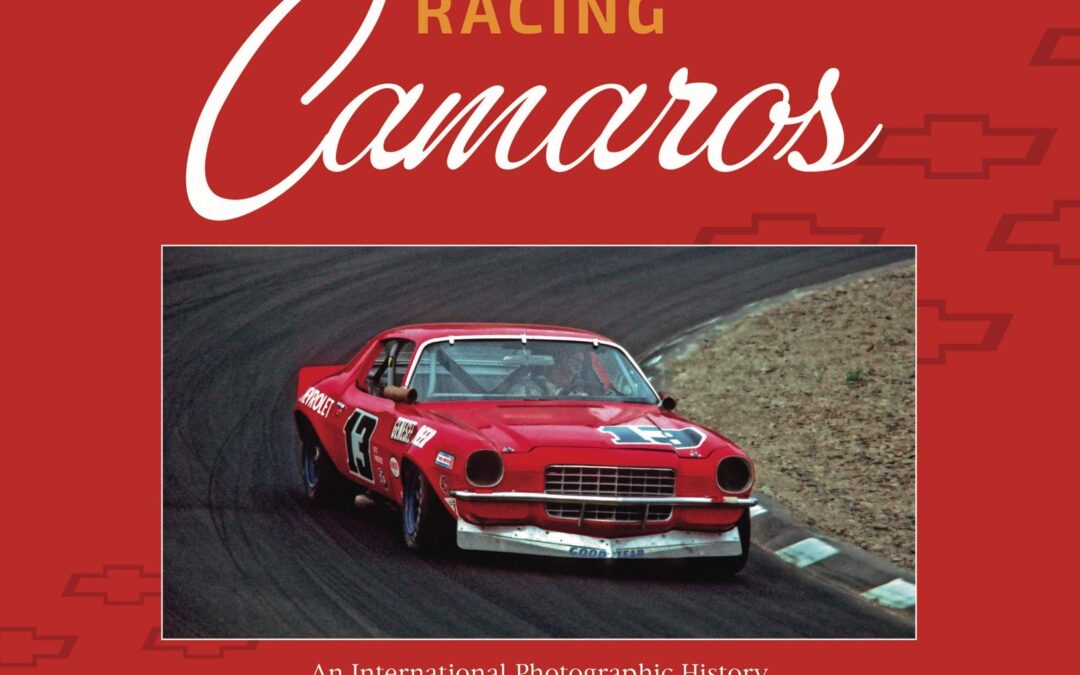
Chevrolet created the Camaro in response to the runaway sales success of the Ford Mustang, the first pony car. The Mustang went on sale in April 1964, and by August that same year, General Motors launched an intensive program to bring its own pony car to market. In September 1966, the Camaro went on sale.
Chevrolet wanted the Camaro to be better than the Mustang in every area, including style, ride-quality, and performance. To that end, with the Mustang having already achieved so much racing success, Chevrolet wanted to beat it on the track also.
Racing Camaros: An International Photographic History 1966 – 1986 is a photographic celebration of road racing Camaros throughout the world. It focuses on production-based cars, rather than the heavily modified tube-frame silhouette machines that began appearing in the late 1970s. Included are images of big-budget factory-supported cars competing in the Trans-Am series, right through to low-buck independents, and cars competing throughout the world.
For the first time, the international road racing representation of the Camaro is featured in a book, which includes countless photos that have never been published. Technical detail is provided throughout, from concept and design, right through its racing career, and the challenges and developments that took place to make it a winner. Only period images have been used. This is a true photographic history depicting the global popularity of the Chevrolet Camaro as a road racing car.

MILLE MIGLIA’S CHASSIS is a journey through the cars that took part to one of the most famous races of motorsport’s golden era. It is an ambitious project and the first of its kind: its aim is to document all the cars which participated at every edition of the original race between 1927 and 1957. MILLE MIGLIA’S CHASSIS will be developed in a series of 10 volumes: each car featured that took part to the Mille Miglia from 1927 to 1957 is presented with two lists: one about all the Mille Miglia speed races in which it took part, a second one of following events under the Mille Miglia name. To conclude, a third separate list comprehends the categories of the car, the stone from which spring the pages of the book and includes all the races and events in which the car took part worldwide in the years. Moreover, the cars that participated from 1958 to the events in the name of the Mille Miglia appear in another section of the book. Written for the motoring enthusiasts all over the World, MILLE MIGLIA’S CHASSIS is the definitive opus giving its readers a full perspective of the diversity and ingenuity of the machinery running the most beautiful race the world has ever seen.
In the second volume of the series there will be 45 cars featured which took part in the original editions of the race, plus another 11 of those participating in events under the Mille Miglia name from 1958 to today. MILLE MIGLIA’S CHASSIS will be a true collector’s item, a “must have” for those who want to have all the cars which took part in the Mille Miglia in their bookshelf!
Limited edition of 1400 copies
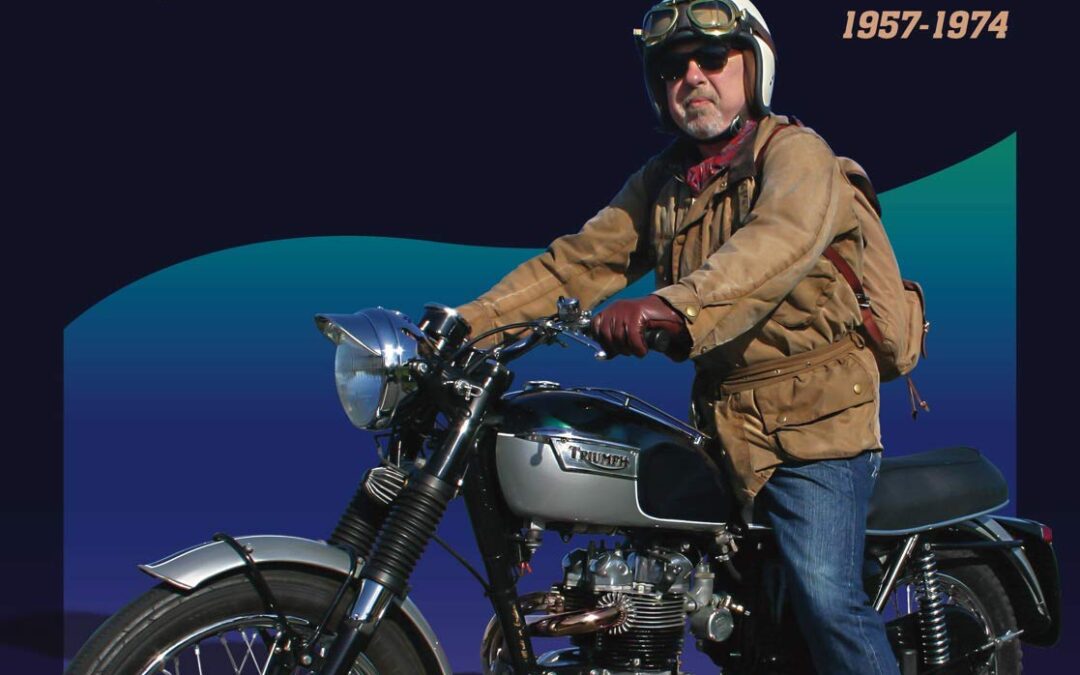
Want to be an expert on Triumph’s 350 and 500 unit-construction twins? Here is everything you need to know about these classic machines.
Alongside the headline-grabbing bikes – the Bonneville and Trident – Triumph built a whole series of smaller 350/500cc machines, with all the style of their bigger brothers, but lighter in weight, easier to ride and now cheaper to buy. The Triumph 350/500s played a key role in the company’s success through the 1960s, in North America as well as the UK. The range included everything from the original 350cc 3TA, a mild mannered tourer, to the final Daytona Tiger 500 (a modified version of which won the Daytona 500 race in 1967), and the TR5T trail bike.
This comprehensive book covers the complete history of these bikes, with details of model variants, advice on buying and living with a Triumph 350/500, technical specifications, and a list of useful contacts.

The Yamaha FS1-E is a 1970s icon. Introduced in the early ’70s, it became an instant success, giving 16-year-olds their first taste of motorcycle performance and freedom, and totally overshadowing the other mopeds available at that time.
Many riders had their FS1-E for one year only before progressing to larger machines. Today, nostalgia for the youthful exuberance engendered by the ‘Fizzie’ has resulted in many ex-owners wanting to recreate their pride and joy.
Most FS1E ‘s have not endured the test of time well, and very few good original examples exist. There are, however, plenty of restorable machines around, and this book guides the do-it-yourself restorer through the process, from the minefield of initially finding a machine to restore, to the potential pitfalls of a first restoration. The bikes featured and photographed for the book include a seriously neglected 1974 machine, a part restored 1976 model – of dubious type, and a 1975 DX model which arrived as a pile of bits.

The latter half of the twentieth century was full of illusions. We lived in an illusion of peace, an illusion that Europe was not at war and that the horrors of the Second World War would not be repeated. But in reality, society was preparing for the next war. As children we donned thin plastic ponchos and practiced how to survive a chemical or nuclear attack out in the fields. The threat of a new military conflict hung in the air constantly. History now denotes this time of apparent peace more accurately as the Cold War. It lasted for several long decades, passed through various phases, crises, milestones, victories and defeats, but peace was only illusory.
Air forces were one of the most important military branches during this era. East and West competed in speed, flying range and numerical superiority. Technical development forced both sides to quickly replace large numbers of machines, which is why we can now find surplus aircraft from the Cold War on display in military museums.
As I started my search, I soon found that, as opposed to old cars, planes are not often found in barns or backyards. It is not easy for private owners to get their hands on military machines. I hence focused on museums and associations for aviation enthusiasts. The Czech Republic is a wonderful country in this sense, because Czechs are sentimental people and try to keep things alive even if it does not make sense financially. I presume that is why we have so many aviation museums. But the thing is, I am not interested in those nicely restored, polished planes. I am after old, rusty ones. And so I had to look for collectors who could not afford expensive restorations and who were showing history the way I wanted it – authentic and dilapidated. And since repairing planes is such a demanding hobby, I ended up finding plenty. The photos were taken 2014–2019 in five countries: Czech Republic, Slovakia, Germany, Poland and Cuba.
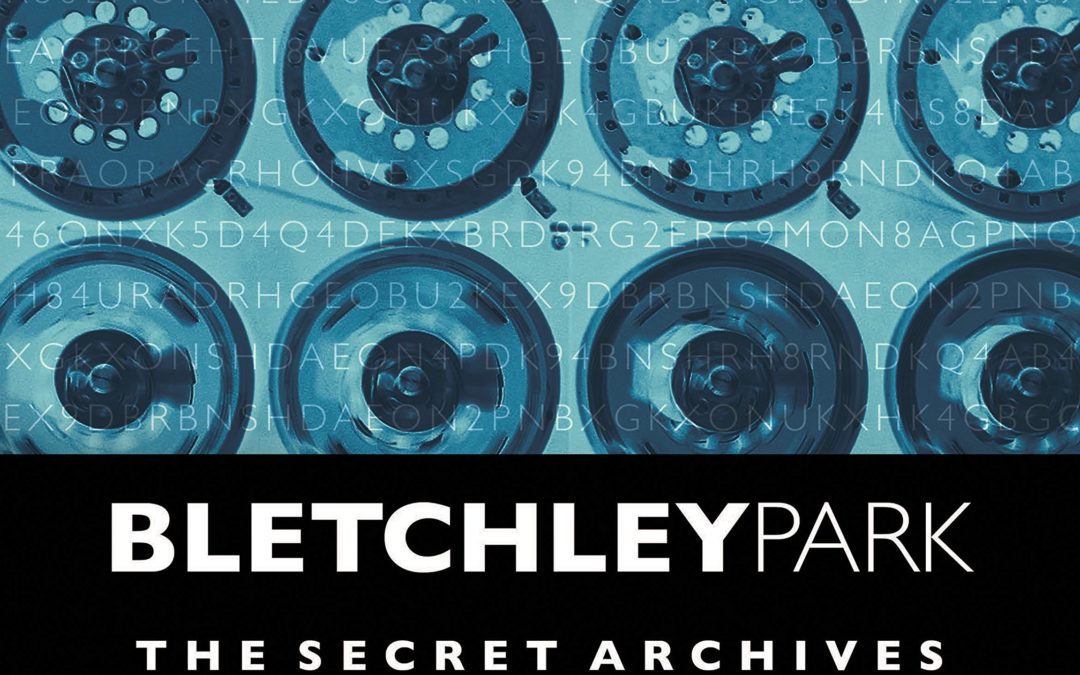
This beautifully presented slipcased collector’s edition of the best selling title, The Lost World of Bletchley Park is a comprehensive illustrated history of this remarkable place, from its prewar heyday as a country estate, its wartime requisition and how it became the place where modern computing was invented and the German Enigma code was cracked, to its post-war dereliction and then rescue towards the end of the twentieth century as a museum.
Removable memorabilia includes:
1938 recruiting memo with a big tick against Turing’s name
Churchill’s ‘Action this day’ letter giving code breakers extra resources
Handwritten Turing memos
Top Secret Engima decryptions, about the sinking of the Bismark, German High Command’s assessment of D-Day threat and the message announcing Hitler’s suicide
A wealth of everyday items such as authentic theatre posters, a map of Bletchley Park, canteen menus, teleprinter print-outs of codes, the Colossus paper tape spooled through machines
Newly redesigned interiors with 25% new content, high end slipcase package featuring removable facsimile documents, this is an essential purchase for everyone interested and wanting to experience the place where code-breaking helped to win the war.
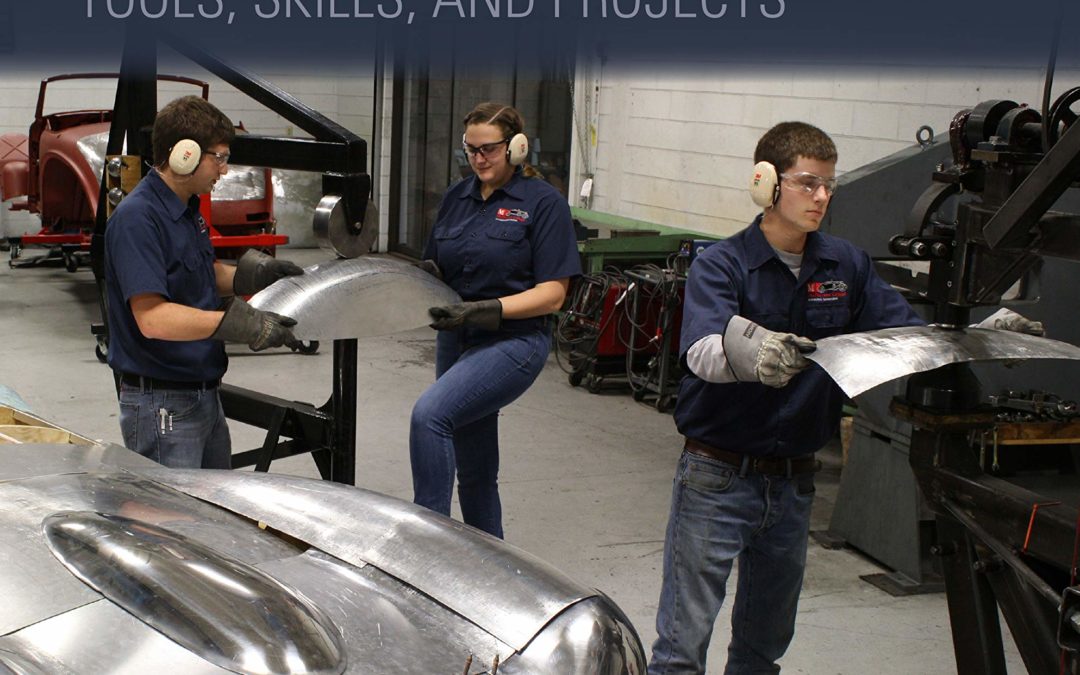
Whether you want to create custom or replacement parts or build an entire automobile body, this metalworking course for gearheads from best-selling automotive restoration author and professor Ed Barr will take you as far as your interests reach. Barr demystifies this seemingly black art with information on tools and basic skills and 14 customizable projects, fully illustrated with step-by-step color photography.
First, you’ll learn how to assemble your ideal toolkit, as well as how to build a power hammer and an English wheel. In the process, Barr will help you make informed choices based on available space and budget. Once you’re all set up, he addresses the concepts of shape and form.
The projects are presented in a way that you can easily apply them to their own vehicles, whatever they may be. Barr also takes the time to show how the projects can be accomplished with different available tools. As you go, you’ll gain the skills and confidence for tackling the increasingly complex cases presented. Work your way up to building a fender utilizing the wheeling machine you built earlier; then move on to building a Model T speedster body and an Indy car, and later a challenging ’â??34 Plymouth fender. The book even includes common “goofs” and how to avoid and, if necessary, correct them.
Written in an engaging and approachable style, Sheet Metal Shaping serves equally well as a useful supplement to Barr’s previous Professional Sheet Metal Fabrication or as a must-have standalone volume for any fabricator’s library.





